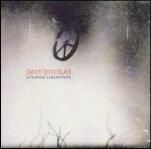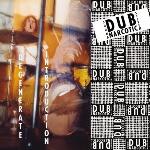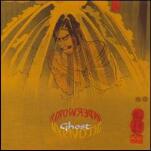6 Music Reviews
by dave heaton
 Danger Mouse, The Grey Album (self-released)
Danger Mouse, The Grey Album (self-released)
The Grey Album, Danger Mouse's remix of Jay-Z's Black Album using only sounds from the Beatles' White Album for the music, may be a cultural oddity and legal battle-in-waiting, but it's also a vibrant, innovative, and fun exercise in brain power and DJing skills. Instead of just putting Jay's voice over Beatles tracks (doing the "mash-up" thing that's so in vogue these days), he's cut the Beatles songs up into rock-oriented hip-hop tracks that match the rhymes perfectly. Listen and try not to drop your jaw at the fact that the hot hip-hop beats that line the tracks are manipulations of sounds from Beatles songs. DM sometimes keeps it subtle, but other times takes recognizable hooks from The White Album and loops them as part of the track's core. "What More Can I Say" and "Encore" are two tracks that are easily recognizable as Beatles-hybrids; they're also two of the more exciting hip-hop songs you're likely to hear so far these year (along with Foreign Legion and Kanye West's albums), the first funking up "While My Guitar Gently Weeps" and the second deftly rocking up Jay-Z's rhymes with "Savoy Truffle." I don't know what Jay-Z thinks about this project, but if he had any sense he'd be ecstatic, as the best of these tracks show off his rhyming abilities way better than the original tracks did. Songs that originally seemed like self-indulgent attempts to cement Jay-Z's status as legend sound so much fresher in this context. That isn't to say that The Grey Album is better than The Black Album - Danger Mouse's album is more of an experiment than a cohesive statement, and as such some tracks work better than others (plus he doesn't even tackle one of the original songs, "Threat"). But it is a much wilder, more daring work, one that takes the rock n' roll subtext of the Jay-Z/Rick Rubin collabo "99 Problems" and pushes it out to the rest of the album, turning The Black Album into one of the most successful rock/hip-hop hybrids ever.
 Dave Douglas, Strange Liberation (Bluebird/Arista)
Dave Douglas, Strange Liberation (Bluebird/Arista)
The opening sounds on trumpeter Dave Douglas' Strange Liberation album are straight out of the Bitches Brew-era Miles Davis playbook - but, as on last year's phenomenal Freak In, Douglas manages to both mimic the feeling of his hero's music and make you forget about it. In other words, Douglas and his bandmates are masterful enough players that they can work in familiar territory without making that all you think about. Sure, Strange Liberation often seems to be segueing from one period of Davis history to another (from the be-bop years on through his flirtations with rock), with occasional detours into Duke Ellington-ish melancholy balladry and an overriding love of pop melody that keeps things from getting too out-there even when he's traversing Miles' most experimental periods. But Douglas doesn't mimic Miles' trumpet techniques as much as does his overall atmospheres and styles, and his playing is arresting in its own right. And while Strange Liberation features a strong quintet, often the spotlight is shinning right on its "special guest," Bill Frisell, who shows off his jazz chops in a variety of settings, impressing me far more than his solo recordings generally do. Douglas might not be the most progressive of jazzmen, but he's a skilled player who surrounds himself with skilled players and runs through classic jazz styles in a lively fashion.
 Dub Narcotic Sound System, Degenerate Introduction (K)
Dub Narcotic Sound System, Degenerate Introduction (K)
Dub Narcotic Sound System, the nonconformist DIY party collective lead by Calvin Johnson, has always taken an approach that's intellectually indebted to both dub reggae and to punk, but is musically more about coming up with funky tracks that you can dance to and scream slogans about starting a revolution through dance music over. That said, their latest is more overtly dub-influenced than usual, but also has even more energy than usual. If Degenerate Introduction works better than their other albums, it's all due to one thing: the funky drummer. More generally, here they're playing it as stream-lined and back to basics as ever - more often than not you've got drums, a fat bass line, maybe some sparse guitar licks, and a voice, all doing their best to shake you out of your chair. Things slow down in a nice mellow way with a Spaghetti-Western-flavored dub track called "Code of the West," but overall it's about getting up and doing something, whether it's moving what you got ("Dub Narcotic Groove") or calling out lying politicians ("Blood Flow").
 Ghost, Hypnotic Underworld (Drag City)
Ghost, Hypnotic Underworld (Drag City)
"Hypnotic Underworld"? Sounds like the right description for the other world that the Japanese experimental folk group Ghost has been living in since their self-titled debut album was released in 1991. But while that album and its immediate successor, Second Time Around, lended an intensely beautiful strangeness to gentle folk songs, since then the group has often jumped over the cliff that leads to freakout rock explosions. Their latest album Hypnotic Underworld's four-part opening title suite brings up the curtain on Ghost living somewhere in the far reaches of space, feeling their way around abstract free-jazz pieces that are still touched by traditional folk sounds, raw rock n' roll power, and the sounds of nature. That's only the start, however, to a dizzying experience that includes covers of both Syd Barrett and Earth, Wind & Fire, plus a haunted spoken poem, gentle flute-laden passages and glimpses of their trash-rock alter-egos. All in all, Ghost sound as vital as they ever have, ready to explore countless musical styles in ways that truly push the envelope.
Group Sounds, Shadows and Substance (self-released)
A jagged, raucous guitar riff opens Group Sounds' Shadows and Substance EP, kicking off a hell of a 4-song rock n' roll party. 60s melodicism, garage-rock grit and a headstrong punk attitude flavor all four of these songs, all of which I've been blaring non-stop for days straight. The NYC group takes a rough-and-ready approach to their songs, which will turn the excitement level up to immeasurable levels no matter where you are. These songs sound like they could rock the stuffing out of any crowd imaginable - from the most nonchalant elitists to a bunch of half-awake drunks, from old-school rock fans to a kindergarten class that's looking to dance til they can dance no more. Classic songs played with heart and soul; I love it.
 Alan Watts, This Is IT (Locust Music)
Alan Watts, This Is IT (Locust Music)
What the &@#% is this? Alan Watts' This Is IT is one of the stranger albums you'll hear, and it was recorded back in 1962. A celebration of "the art of pure nonsense," the album finds Watts and pals chanting, mumbling and playing their demons out through tracks that combine screaming matches, Zen Buddhist poetry and free jazz played with childlike abandon. From the opening track "Love You," a goofball shoutfest over percussion that's billed as an "explosive dialogue between Alan Watts and Roger Somera" onward, the album is an exercise in exploration through intuitive creativity - meaning follow your instincts and see what comes out. In that way it's a journey towards collective discovery, fitting for the work of a spiritual teacher. But it's also a psychedelic freakout and a surrealist's feast, an attempt to get at feelings and ideas through sounds and words that appear to be absolute nonsense. And in that regard it's a rather glee-filled endeavor - you'll be scratching your head in curiosity but also smiling at what you hear.
Copyright (c) 2005 erasing clouds |
|